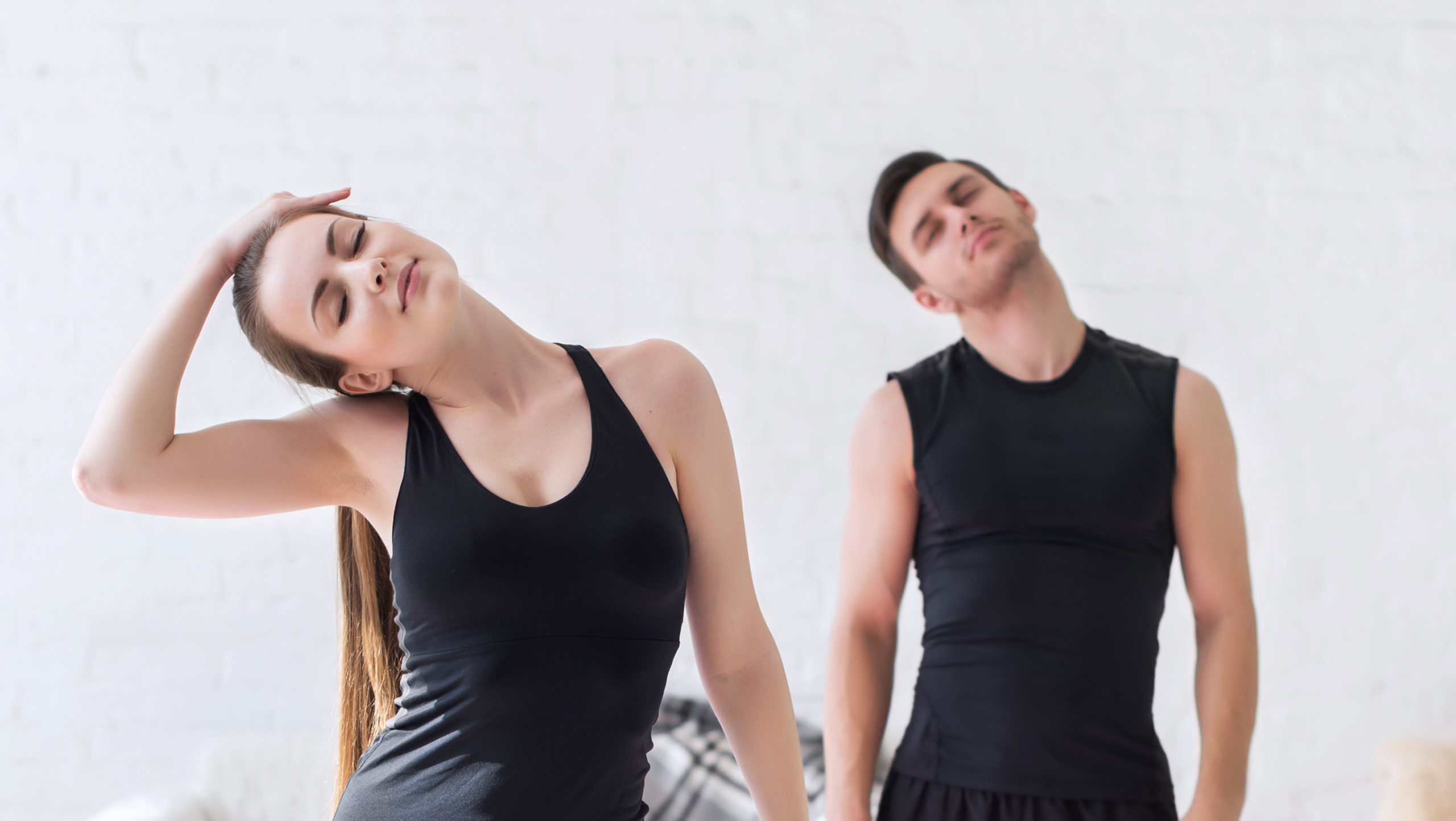At some point we all experience neck pain. If you look around, it’s not difficult to see why more and more people are developing neck pain. The main culprit would be that little thing in our hands that we can’t seem to
put down.
Of course, I am talking about the infamous cell phone. The human head weighs around 10 pounds. If we think of how it sits on our spine, you can visualize the amount of torque that can be placed on the spine as well as the muscles holding the head up when we look down. The 10-pound head will begin to feel closer to 40 pounds when we look down.
Why do we have neck pain?
Imagine a basketball sitting atop a paper towel roll. Now picture you have rubber bands (muscles) attaching the ball to the paper towel roll. If you were to tilt that ball downward and put tension on those rubber bands, it would simulate what happens when we look down at our phones. Doing this for hours day after day can cause some serious problems for our neck. Laptops and computers can slowly contribute to the problem. The way our muscular system in the neck is set up, some of the muscles will be stretched while others will be compressed.
The neck is a rather mobile area of the body. It can flex forward, extend backwards, bend laterally side to side and rotate right to left. When our neck is put in that forward flexed position, other muscles are going to kick in to try and lighten the load. This can cause the muscles to become shortened. There are small muscles just under the back of the skull that can play a major role in neck pain as well as headaches. They are called the “suboccipital” muscle group. They become compressed as we look up with a forward head posture. The best way to get to these is using a technique called “myofascial release,” which is a fancy term for pushing on them like a massage. The stretches are rather intuitive and make a lot of sense when you look at the different movements the neck does. See the stretches in the sidebar to help give you some relief.
Stretching may provide some temporary relief to neck issues, but in order to really solve the problem, you need to think about fixing your posture. Exercises that strengthen the muscles that will bring your head back in to neutral are essential when treating someone with neck issues. One of the best exercises that you can do on your own is called the “chin tuck.” It pretty much is the counter movement to the forward head posture and can help bring you back in to alignment. When you are doing the stretches be sure to hold them for about 30 seconds.
STRETCHES
Scalene Stretch
These muscles attach the cervical spine to the upper ribs. So, you can imagine why they may become tight. You can stretch these by laterally bending the head to one side. Start by holding lateral bend, then rotate your head to the opposite direction. You can rotate you head back toward the side that you are bending to get more muscles involved.
Upper Trap Stretch
The trapezius is a huge muscle in our back. It runs from our head to the middle of our back. It is broken up in to upper, middle and lower. As far as the neck is concerned, it is the upper we are worried about. A good way to stretch it is to look down and then apply gentle pressure pulling your head down toward that shoulder while keeping the opposite shoulder depressed.
Levator Scapulae Stretch
This muscle connects our scapula to our head. It’s rather small but can cause pain when irritated. The stretch is similar to the upper trap with a slight variation. Look down then turn your head about 45 degrees. Apply a gentle pull on the head in the direction you are looking.
Suboccipital Release
These are the tiny muscles in the back of your neck that connect to your skull. They can be difficult to stretch, but feel really good when they are massaged. You can do this yourself with a couple of tennis balls and some athletic tape. Take the two balls and wrap them side by side so that they stick together. Once you have this made, lay down on the ground or a firm surface and place the balls just under the base of your skull. Start to put some weight on them and move around in the areas that are causing you pain. This is good for neck pain as well as headaches associated with neck pain.
Chin Tuck
This is pretty simple, but can be difficult for people to execute. Keeping your head neutral. Pull your chin directly backwards. You are making yourself have a double chin. You won’t look very flattering while performing this but doing these throughout the day can help get you straightened up.
by Chris Pregony
Related articles:
Relieve Back Pain with These Stretches

